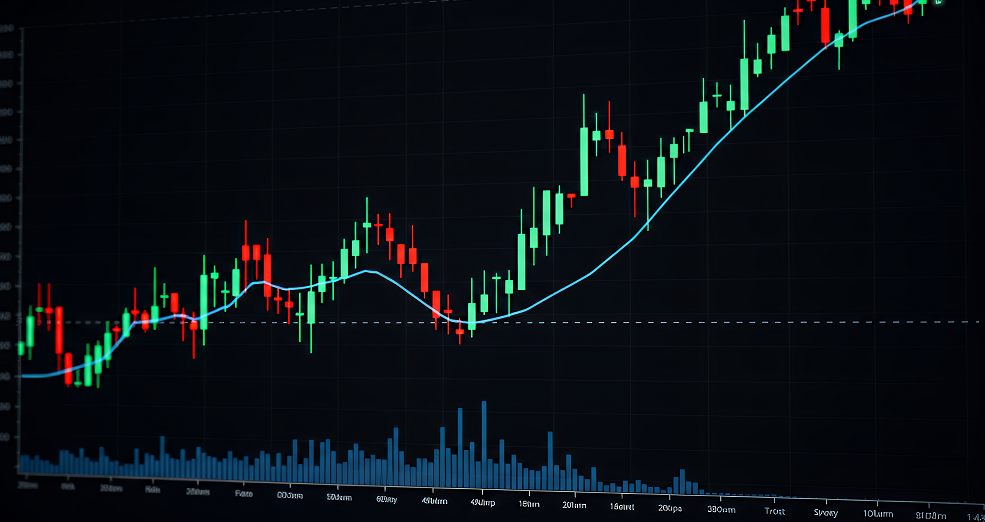IC Markets Asia Fundamental Forecast | 5 August 2025
What happened in the U.S session?
The U.S. overnight session was shaped by Friday’s trio of shocks: surprisingly poor jobs data, heightened trade war/tariff anxiety, and high-profile departures from key economic institutions. Most-impacted assets included U.S. stocks (initially down, then rebounding), the U.S. dollar and Treasury yields (both volatile, tilted on rate cut bets), and gold (steady as risk gauge). Markets remain highly risk-sensitive as political events and macro data unpredictably shift the outlook for policy, the dollar, and global risk sentiment.
What does it mean for the Asia sessions?
As European and U.S. sessions begin, expect heightened volatility, cautious positioning, and headline-driven moves. All eyes are on macroeconomic data (ISM, PMI, retail sales), central bank signals, and the fallout from trade policy. Traders should stay nimble, with safe-haven assets favored and knee-jerk rallies possible amid risk-off flows. Volatility: Technicals and sentiment remain fragile following the global selloff, with any sign of easing (such as Fed talk or data) likely to trigger relief rallies, but true stabilization depends on fresh macroeconomic guidance.
ECB and Fed communication is crucial; any signal on rates or emergency intervention could rapidly change sentiment. The Bank of England rate decision looms (Aug 7). More China trade, PMI, and inflation data this week will determine if the world’s second-largest economy can stabilize or if more commodity/FX downside is coming. U.S. ISM and S&P services readings, plus JOLTS data, are the day’s pivotal macro releases, closely tied to rate cut bets and the global growth story.
The Dollar Index (DXY)
Key news events today
ISM service PMI (2:00 pm GMT)
What can we expect from DXY today?
The U.S. dollar is under persistent pressure today, as weak jobs data, increased Fed rate cut expectations, and ongoing political and trade uncertainties drive short-term bearish sentiment. Most major and EM currencies are stronger against the dollar, while only safe-haven flows offer some localized support. Volatility and downside risk are likely to persist in the coming sessions. The U.S. session was marked by significant volatility, with markets reacting to a trio of shocks: weak jobs data, heightened trade/tariff anxiety, and political turmoil affecting key economic institutions.
The most impacted assets were U.S. stocks, which saw a sharp sell-off followed by a strong rebound; the U.S. dollar and Treasury yields, which fluctuated on changing rate cut expectations; and gold, which remained a key gauge of risk sentiment. The market remains highly sensitive to political events and macroeconomic data, which are unpredictably shifting the outlook for U.S. policy, the dollar, and global risk sentiment.
Central Bank Notes:
- The Board of Governors of the Federal Reserve System voted unanimously to maintain the Federal Funds Rate in a target range of 4.25% to 4.50% at its meeting on July 29–30, 2025, keeping policy unchanged for the fifth consecutive meeting.
- The Committee reiterated its objective of achieving maximum employment and inflation at the rate of 2% over the longer run. While uncertainty around the economic outlook has diminished since earlier in the year, the Committee notes that challenges remain and continued vigilance is warranted.
- Policymakers remain highly attentive to risks on both sides of their dual mandate. The unemployment rate remains low, near 4.2%–4.5%, and labor market conditions are described as solid. However, inflation is still somewhat elevated, with the PCE price index at 2.6% and core inflation forecast at 3.1% for year-end 2025, up from earlier projections; tariff-related pressures are cited as a contributing factor.
- The Committee acknowledged that recent economic activity has expanded at a solid pace, with second-quarter annualized growth estimates near 2.4%. However, GDP growth for 2025 has been revised downward to 1.4% (from 1.7% projected in March), reflecting expectations of a slowdown in the coming quarters.
- In the revised Summary of Economic Projections, the unemployment rate is expected to average 4.5% in 2025, and headline PCE inflation is forecast at 3.0% for the year, with core PCE at 3.1%. Policymakers continue to anticipate that inflation will moderate gradually, with ongoing risks from tariffs and global conditions.
- The Committee reaffirmed its data-dependent and risk-aware approach to future policy decisions. Officials stated they are prepared to adjust the stance of monetary policy as appropriate if risks emerge that could impede progress toward the Fed’s goals.
- As previously outlined, the Committee continues the measured run-off of its securities holdings. The pace of balance sheet reduction, which slowed since April (monthly redemption cap on Treasury securities reduced from $25B to $5B, while holding agency MBS cap steady at $35B), was left unchanged this month to support orderly market functioning and financial conditions.
- The next meeting is scheduled for 16 to 17 September 2025.
Next 24 Hours Bias
Weak Bearish
Gold (XAU)
Key news events today
ISM service PMI (2:00 pm GMT)
What can we expect from Gold today?
Gold is well-supported by a confluence of weak U.S. economic data, expectations of monetary easing by the Federal Reserve, and persistent geopolitical and trade-related uncertainties. While the market may experience some consolidation after recent gains, the overall outlook for gold remains constructive as long as these supportive factors are in play.
Gold spot prices are trading near $3,373 per ounce as of August 4, representing a 0.31% daily gain and a 1.09% monthly increase. The precious metal reached intraday highs near $3,377, marking continued strength following Friday’s explosive rally. Gold surged to $3,350 on Friday after weak U.S. jobs data and new tariff announcements triggered massive safe-haven flows, delivering the metal’s biggest one-day gain in two months.
Next 24 Hours Bias
Medium Bullish
The Australian Dollar (AUD)
Key news events today
No major news event
What can we expect from AUD today?
The Australian Dollar faces a challenging environment as domestic monetary easing expectations coincide with global uncertainty and U.S. dollar strength, keeping the currency under pressure despite Australia’s relatively favorable position in the current trade dispute landscape. Near-term bearish bias prevails as RBA rate cut expectations weigh on the currency, while global trade tensions and U.S. dollar strength provide additional headwinds.
The RBA policy decision on August 12 will be crucial, along with upcoming Australian PMI data and any developments in U.S.-China trade relations. Further escalation in global trade tensions or unexpected hawkishness from the RBA could shift the current trajectory.
Central Bank Notes:
- The RBA held its cash rate steady at 3.85% at the July meeting on 8 July 2025, following a 25bps reduction in May and in line with widespread market expectations after recent data showed inflation tracking within the target band.
- Inflation continues to ease from its peak, with higher interest rates helping to rebalance demand and supply across the Australian economy. Data for the June quarter signaled ongoing progress, though underlying pressures persist in certain sectors.
- Trimmed mean inflation for the June quarter likely remained near 2.9% and headline CPI around 2.4%, both within the RBA’s 2–3% target range. The Board noted further evidence of inflation convergence, but flagged that not all price categories are moving in tandem.
- Financial markets have shown increased volatility in the wake of global tariff and trade policy developments—especially as a result of recent U.S. and EU announcements. This has pushed asset prices higher but contributed to an uncertain outlook for domestic growth and employment.
- Private domestic demand showed a tentative recovery. Real household incomes improved and signs of easing household financial stress emerged, but some business sectors continued to face subdued demand, limiting their ability to pass on cost increases.
- Labour market conditions remained tight overall. Employment continued to expand, with low rates of underutilization. Business surveys suggest labour availability remains a constraint, though there are signs of a gradual easing compared to earlier in 2025.
- Underlying wage growth softened modestly, though unit labour cost growth remains elevated due to below-trend productivity gains. The Board remains attentive to developments in wage and productivity dynamics as cost pressures continue to evolve.
- Uncertainties persist for both domestic activity and inflation. Consumption growth has risen, but more slowly than anticipated three months ago, with global and domestic factors both contributing to the cautious outlook.
- There remains a risk that household spending picks up more slowly than forecast, which could result in ongoing subdued aggregate demand and a sharper deterioration in employment conditions.
- Given that inflation is expected to remain around the target band, the Board judged that it was appropriate to keep policy settings unchanged in July, maintaining a position that is still mildly restrictive.
- The Board continues to monitor all incoming data and assesses risks carefully, with a focus on global trends, domestic demand indicators, inflation outcomes, and the labour market outlook.
- The RBA remains committed to its mandate of price stability and full employment and stands ready to adjust policy as needed to achieve these objectives.
- The next meeting is on 11 to 12 August 2025.
Next 24 Hours Bias
Weak Bearish
The Kiwi Dollar (NZD)
Key news events today
Employment change q/q (10:45 am GMT)
Unemployment rate (10:45 am GMT)
What can we expect from NZD today?
The New Zealand Dollar remains under significant pressure on August 5, 2025, trading near multi-month lows as markets await crucial employment data that could show unemployment at an eight-year high. While the RBNZ has paused its rate-cutting cycle, the central bank’s easing bias and weak domestic economic signals continue to weigh on the currency.
The combination of higher U.S. tariffs, expected labor market deterioration, and the prospect of further RBNZ rate cuts suggests continued downward pressure on the NZD in the near term. The New Zealand Dollar continued to trade near multi-month lows, with the NZD/USD pair falling to approximately 0.5907 on August 4, down 0.05% from the previous session. Over the past month, the NZD has weakened 1.68% against the U.S. dollar and is down 0.72% over the last 12 months.
Central Bank Notes:
- The Monetary Policy Committee (MPC) agreed to hold the Official Cash Rate (OCR) at 3.25% on 9 July, marking the first pause following six consecutive rate cuts.
- The MPC cited heightened uncertainty and near-term inflation risks as reasons to wait until August for further action.
- Although the annual consumer price index inflation increased to 2.5% in the first quarter of 2025, it remained within the MPC’s target range of 1 to 3%, noting that the outlook for medium-term inflation pressures has evolved broadly in line with the May MPS projections.
- While it is expected to be near the upper end of the band in the second and third quarters of this year, easing core inflation and spare capacity in the economy should help return it toward the 2% midpoint over time.
- The MPC noted that, despite global factors, domestic financial conditions are evolving broadly as expected, as mortgage and deposit interest rates have continued to decline, reflecting a lower OCR, strong bank liquidity, and soft credit growth.
- In aggregate, GDP growth over the December and March quarters was stronger than expected, reflecting a pickup in household consumption and business investment. However, higher-frequency indicators suggest weaker-than-expected growth in April and May.
- Large economic policy shifts overseas and concerns about sovereign risk could result in additional financial market volatility and increased bond yields, while prolonged economic uncertainty might induce further precautionary behaviour by households and firms, slowing the domestic economic recovery.
- Subject to medium-term inflation pressures continuing to ease in line with the Committee’s central projections, the Committee expects to lower the OCR further, broadly consistent with the projection outlined in May.
- The next meeting is on 20 August 2025.
Next 24 Hours Bias
Weak Bearish
The Japanese Yen (JPY)
Key news events today
No major news event
What can we expect from JPY today?
The Japanese yen faces a complex mix of supportive and bearish factors. While weak U.S. data and safe-haven demand provide near-term support, the BoJ’s cautious policy stance and domestic political uncertainty limit the currency’s upside potential. Tuesday’s BoJ meeting minutes will be crucial for determining whether the central bank is moving closer to policy tightening or maintaining its accommodative approach.
The BoJ held its policy rate steady at 0.5% at the July 31 meeting but raised its core inflation forecast for fiscal 2025 to 2.7% (up from 2.2% previously) . Governor Ueda emphasized a cautious, data-dependent approach, stating the bank will continue raising rates if economic conditions align with projections. BoJ Meeting Minutes from the June meeting are scheduled for release on Tuesday, providing additional insights into the board’s rate path thinking.
Central Bank Notes:
- The Policy Board of the Bank of Japan decided on 31 July, by a unanimous vote, to set the following guidelines for money market operations for the inter-meeting period:
- The Bank will encourage the uncollateralized overnight call rate to remain at around 0.5%.
- The BOJ will maintain its gradual reduction of monthly outright purchases of Japanese Government Bonds (JGBs). The scheduled amount of long-term government bond purchases will, in principle, continue to decrease by about ¥400 billion each quarter from January to March 2026, and by about ¥200 billion each quarter from April to June 2026 onward, targeting a purchase level near ¥2 trillion in January to March 2027.
- Japan’s economy is experiencing a moderate recovery overall, though some sectors remain sluggish. Overseas economies are generally growing moderately, but recent trade policies in major economies have introduced pockets of weakness. Exports and industrial production in Japan are essentially flat, with any uptick largely driven by front-loaded demand ahead of U.S. tariff increases.
- On the price front, the year-on-year rate of change in consumer prices (excluding fresh food) remains in the mid-3% range. This reflects continued wage pass-through, previous import cost surges, and further increases in food prices, particularly rice. Expectations for future inflation have begun to rise moderately.
- The effects of the earlier import price and food cost increases are expected to fade during the outlook period. There may be a temporary stagnation in core inflation as overall growth momentum softens.
- Looking forward, the economy is likely to see a slower growth pace in the near term as overseas economies feel the pinch of ongoing global trade policies, putting downward pressure on Japanese corporate profits. Accommodative financial conditions are expected to buffer these headwinds somewhat. In the medium term, as global growth recovers, Japan’s growth rate is also expected to improve.
- With renewed economic expansion, intensifying labor shortages, and a steady rise in medium- to long-term expected inflation rates, core inflation is projected to gradually pick up. By the latter half of the BOJ’s projection period, inflation is forecast to move in line with the 2% price stability target.
- There are multiple risks to the outlook, with especially elevated uncertainty regarding the future path of global trade policies and overseas price trends. The BOJ will continue to closely monitor their impact on financial and foreign exchange markets, as well as on Japan’s economy and inflation.
- The next meeting is scheduled for 17 to 18 September 2025.
Next 24 Hours Bias
Strong Bullish
Oil
Key news events today
API Crude Oil Stock (8:30 pm GMT)
What can we expect from Oil today?
Oil prices are facing significant downward pressure as OPEC+ proceeds with planned output increases while economic growth concerns mount. The market is balancing potential supply disruptions from geopolitical tensions against weak demand signals from recent economic data, with the near-term outlook remaining cautious as prices test key technical support levels.
Markets are concerned that global oil supply may outpace demand later this year, potentially boosting inventoriesOPEC+ cited “steady global economic outlook and current healthy market fundamentals” with low oil inventories as justification for the increaseGoldman Sachs maintained its forecast with Brent averaging $64/barrel in Q4 2025 and $56 in 2026, flagging downside risks to demand.
Next 24 Hours Bias
Weak Bearish





